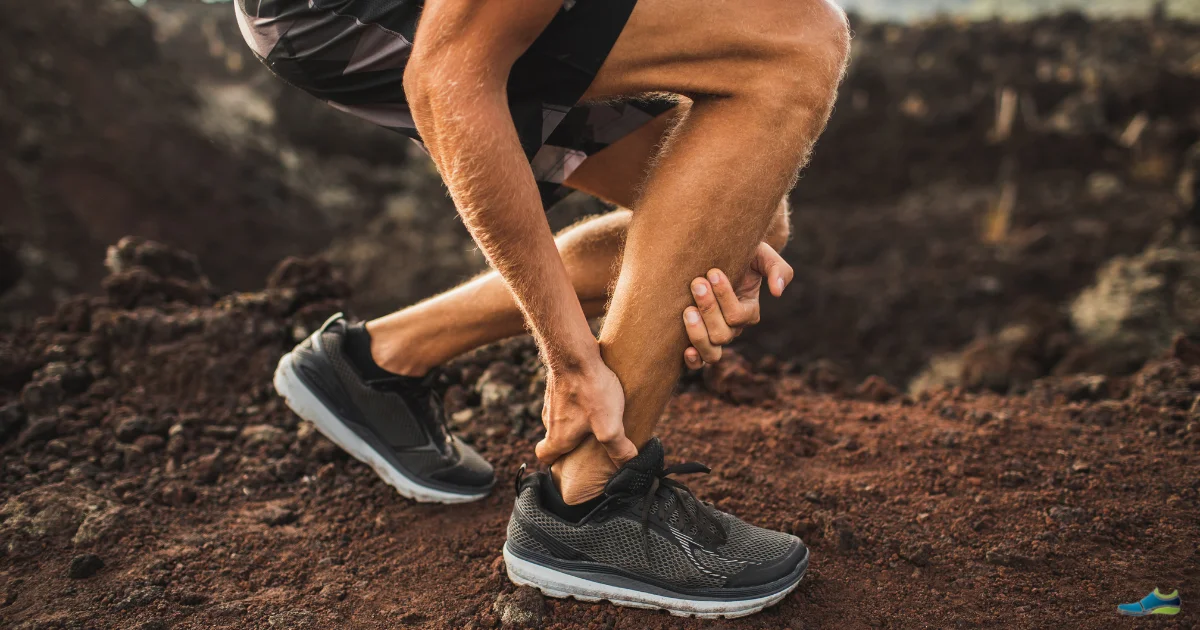Aching or sharp pain at the back of your heel or along the lower calf that flares with walking or running? That’s classic Achilles tendonitis. With the right footwear, load management, and a simple strength plan, most people recover well without injections or surgery.
📌 At a Glance
All the key facts on Achilles Tendonitis in one place — no scrolling, no searching.
Read our Achilles Tendonitis Info Bytes for 20 quick Q&As.
This guide covers causes, symptoms, treatment options, prevention tips, and the best shoes for Achilles Tendonitis and the footwear features that help most.
Best Shoes for Achilles Tendonitis (and Why Footwear Matters)
- Moderate heel‑to‑toe drop (8–12 mm), especially early in rehab (read my heel to toe drop guide)
- Rearfoot stability (secure heel counter, midfoot support to limit excessive twist/tilt)
- Cushioned but not marshmallow‑soft midsoles for shock absorption and predictable support
- Optional rocker forefoot if insertional pain is your main issue
What Is Achilles Tendonitis?
Achilles tendonitis (or Achilles tendinopathy) is irritation and overload of the tendon that connects the calf muscles to the heel bone. It can affect the mid‑portion of the tendon (2–6 cm above the heel) or the insertion where the tendon meets the heel.
Common Causes & Risk Factors
- Sudden training spikes (more hills, speed, or volume)
- Calf tightness or weakness; limited ankle mobility
- Hard floors, long hours standing, or poor recovery between sessions
- Unsupportive or very minimal footwear, abrupt shoe changes (e.g., to lower heel‑to‑toe drop)
- Biomechanics: overpronation, leg‑length differences, stiff big toe
Symptoms & How to Recognise Them
- Morning stiffness and “first‑step” pain at the back of the heel or lower calf
- Tenderness when squeezing the tendon; possible thickening or creaking sensation
- Pain with uphill walking/running, stairs, or after inactivity
- Symptoms ease as you warm up, then return after activity (typical early pattern)
Treatment Options
Early self‑care (first 1–3 weeks)
- Reduce painful impact (hills, sprints, plyometrics); switch to flat, easy walks or cycling
- Ice after activity (10–15 minutes) for symptom relief
- Use a temporary heel lift (5–8 mm) or pick a higher‑drop shoe to reduce strain
- Gentle calf mobility (pain‑free range) 1–2× daily
Build strength (the main fix)
- Heel‑raise program 3–4×/week: start with double‑leg raises on flat ground, progress to single‑leg, then to a small step as symptoms allow
- Aim for slow, controlled reps (3 seconds up/down); stop short of sharp pain
- Progress load with backpack/dumbbells as pain settles
Footwear & insole setup
- Choose cushioned, stable shoes with moderate drop; avoid abrupt switches to low‑drop/minimal shoes during rehab
- Orthotics or supportive insoles may help if overpronation is a factor
- Consider a rocker‑soled trainer if insertional pain limits toe‑off
Professional care
- Physio/podiatry for a staged loading plan, gait/form tweaks, and return‑to‑run testing
- Shockwave therapy may help stubborn cases; injections are used selectively
- Imaging if atypical, persistent, or concern for partial tear
Prevention & Comeback Tips
- Increase training volume or hills by no more than ~10% per week
- Keep calf strength (soleus & gastrocnemius) as a weekly staple
- Rotate footwear; avoid sudden drop changes — transition gradually over 2–4 weeks
- Include easy days and recovery blocks, especially after races or long hikes
When to See a Doctor or Podiatrist
- Sharp “gunshot” pain with swelling/bruising (possible tear) — seek urgent care
- Pain >6 weeks with no improvement despite sensible loading and footwear changes
- Noticeable weakness, night pain, or a thick, very tender lump that won’t settle
FAQs
Q: How long does Achilles tendonitis take to heal?
A: Many improve in 6–12 weeks with progressive loading; stubborn cases can take longer. Consistency beats intensity.
Q: Should I stretch a sore Achilles?
A: Gentle mobility is fine, but heavy end‑range stretching can aggravate symptoms early on. Prioritise
strength first, then add deeper stretches later if needed.
Q: Are heel lifts a good idea?
A: Short‑term, yes — they reduce tendon strain. Plan to wean off as strength returns.
Q: Can I keep running?
A: Possibly at reduced volume/intensity if day‑after pain stays low (≤3/10). If pain spikes, switch to low‑impact cross‑training and rebuild with a structured plan.
Related Reading
Calm the load, build the calf, and choose shoes that help — that’s the Achilles recovery formula. With patient, progressive work, most people get back to comfortable walking and running.

